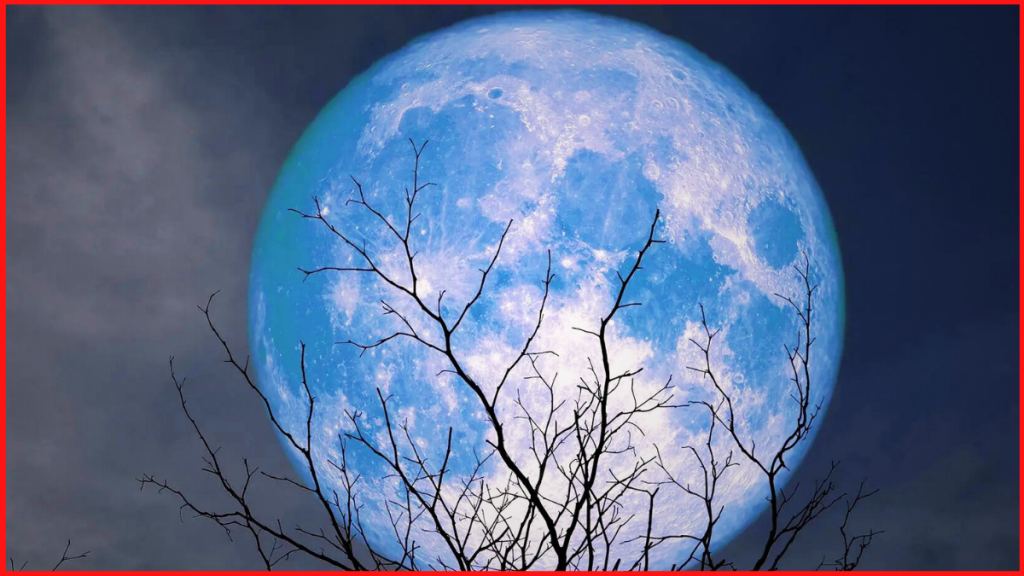New Delhi: Prepare to witness an astronomical spectacle as a “once in a blue moon” event is set to grace the night sky this week. Sky enthusiasts and curious gazers alike should mark August 30 on their calendars, as this rare lunar occurrence promises a captivating sight.
While the term “blue moon” might conjure images of azure splendor, the reality is quite different. In actuality, the moon will shine with an orange hue, an aesthetic marvel to behold. As the fourth and final installment of the four-part supermoon series, the super blue moon of August 30 will rank as one of the most prominent moons of the year. Intrigued? Here’s the comprehensive breakdown of this remarkable cosmic event.
A blue moon, intriguingly, isn’t related to color at all. Rather, it refers to the second full moon within a single calendar month, a relatively rare occurrence. Generally, a full moon illuminates the night sky once every 30 days. However, the advent of a blue moon augments the spectacle, presenting itself twice in a single month. Two categories of blue moons exist the seasonal and the monthly. The former describes the third full moon in a season containing four full moons. The latter, a monthly blue moon, refers to the second full moon appearing within a calendar month, a term born of a historical misinterpretation.
As the final full moon of summer graces the Northern Hemisphere, it assumes the title of “super blue moon.” This title arises due to its alignment as the second full moon within a calendar month, in sync with the moon’s 29-day orbital period around the Earth. The result: a “super moon” status. Supermoons outshine their regular counterparts by 16%, boasting a more substantial and luminous appearance akin to the distinction between a quarter and a nickel. This phenomenon occurs when the moon attains fullness during its closest approach to Earth in its orbit.
Prime Moon-Watching Moments:
For an optimal viewing experience, sky gazers are advised to turn their attention skyward as the moon rises just after sunset during twilight hours. On August 30, 2023, at precisely 8:37 p.m. EDT, the Super Blue Moon will attain its pinnacle of brilliance. The moonrise coincides with the magical twilight hours, casting an ethereal glow. European spectators, don’t fret; August 31 offers an encore of moonrise moments, albeit slightly later.
NASA attests to the exceptional rarity of blue supermoons. These celestial marvels grace the skies only once every decade, propelled by distinct astronomical conditions. Exceptionally, these intervals can extend up to two decades. With blue moons representing a mere 3% of full moons and supermoons accounting for a quarter of these celestial events, the conjunction of the two—blue supermoons—is an enigma indeed. While the timetable for super blue moons exhibits variability, an average span of a decade emerges. The next enthralling duo of super blue moons is slated for 2037, materializing in January and March.
As the celestial ballet unfolds, casting its iridescent glow upon Earth, it offers a vivid reminder of the universe’s mesmerizing grandeur. Be sure to turn your gaze upward and witness the spectacle that is the rare super blue moon.

